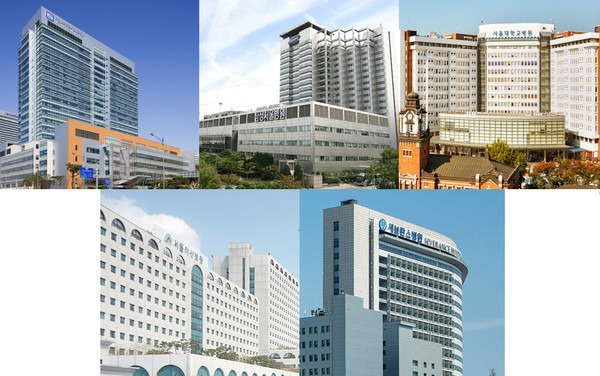
Four out of 10 cancer patients at Big Five hospitals are provincial residents. More than 1 million patients have traveled from provinces to the Big Five hospitals in Seoul to treat cancer over the past five years.
According to an analysis by Rep. Kim Young-joo of the Democratic Party of Korea, 1,034,155 cancer patients living in non-metropolitan areas were treated at the Big Five hospitals from 2018 to 2022. That means about 200,000 people traveled to Seoul from the provinces for cancer treatment every year.
The number of cancer patients at Big Five hospitals has increased every year over the past five years, but the share of non-metropolitan residents has not changed significantly.
The number of cancer patients at the Big Five hospitals increased by 18.4 percent, from 489,881 in 2018 to 579,828 in 2022. The proportion of non-metropolitan residents among all cancer patients remained similar, from 39.1 percent to 38.7 percent, over the period.
In particular, cancer patients in rural areas, where healthcare infrastructure is less developed than in large cities, were more likely to visit Big Five hospitals.
By province, North Gyeongsang marked the highest number of cancer patients visiting Big Five hospitals in the last five years with 124,000, followed by South Gyeongsang with 119,000, South Chungcheong with 117,000, North Chungcheong with 94,000, Gangwon with 86,000, South Jeolla with 79,000, North Jeolla with 77,000, and Jeju with 31,000.
The number of patients from large cities was relatively small, with 85,000 from Busan, 59,000 from Daegu, 43,000 from Gwangju, 66,000 from Daejeon, 31,000 from Ulsan, and 18,000 from Sejong.
"Patients living in non-metropolitan areas have difficulty moving around due to pain and falling physical strength caused by cancer. However, they travel long distances, or rent rooms at office buildings or lodgings for state exam preps near the Big Five hospitals to receive treatment," Kim noted.
For pediatric cancer patients and elderly patients over 70, the burden of out-of-town visits is inevitably greater. However, 5,887 cancer patients under 10 and 55,511 cancer patients over 70 in non-metropolitan areas visited the Big Five hospitals over the past five years, he pointed out.
It is financially and physically burdensome for patients with serious illnesses to travel long distances for treatment, but due to the lack of critical care infrastructure in the provinces, they have no choice but to come to Seoul, Rep. Kim said.
"In the long run, the government must replenish provincial medical infrastructure and manpower to treat critically ill patients,” he said. “It must also take measures to relocate these patients and their caregivers through a survey of critically ill patients in non-metropolitan areas.”

